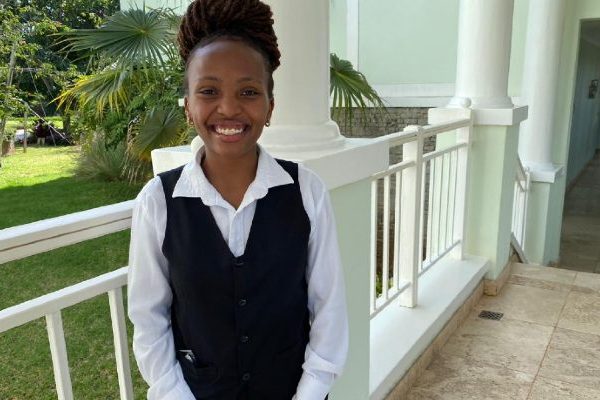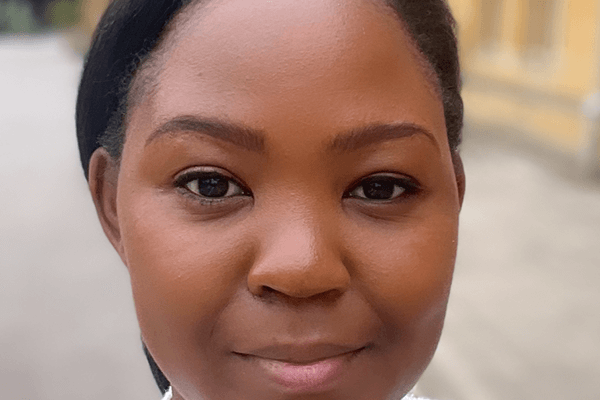The zealous and outstanding 21 year old Strathmore University tourism student, Nina Kosen Soila is a proud partner in the Eco Manyatta Africa (EMA) project; a new concept of construction set to change the way pastoralist communities build their habitats. Together with her father and friend Sheila, the 3rd year Centre for Tourism and Hospitality (CTH) student is optimistic about this project, predicting that in the next few years they will have successfully influenced the lives of many pastoralists in the sub-Saharan region across Africa.
Eco Manyatta Project
EMA housing project is an ambitious concept of improving poor living conditions in the traditional Maasai manyattas. It seeks to use the same housing design of the Maasai community by improving it to make it structurally strong and durable using locally available resources. The project utilizes environmentally friendly materials and clean gas, by use of solar systems for lighting and cooking using biogas made from the cow dung. The rain water will also be harvested and stored for daily use while eco toilets that use less water to clean, and are environmentally friendly are also constructed. The project offers realistic plans to help uplift living conditions of pastoralist all over Africa by providing low-cost, durable, affordable and safe eco-friendly Manyatta housing designs.
EMA’s goal is to enhance the Maasai manyatta using locally available resources and materials, powered with readily available sustainable green energy supply from solar and biogas technology and with the ability of harvesting and storing rain water. The enhancement is cautious not to interfere with the existing Manyatta design and lifestyle.
To sustain the manyattas EMA develop; interlocking bricks made on site that are plastered with cement, mud and cow dung; they also make bigger windows, doors, and solar panels with two small bulbs and a port for charging phones; they install gutters for collecting about 2000 liters of water; eco-toilets and bathrooms; and in addition create value additions to the communities by encouraging pastoralists with the new housing systems to charge phones for members community at a fee, enabling them to generate income.
The new manyattas also work as tourist sites where the pastoralists can host tourists at a fee. Women can also get into small scale farming using the bio-gas generated on site to plant food for their family.
The EMA project idea generated from Nina’s 3-day experience in Narok County where she stayed with a Maasai family to understand their living conditions.
I felt that nobody looked into the problems the Maasai community experience, so I asked my parents to allow me to live in one of the houses just to understand the culture. I got to feel the challenges for myself. I discovered issues such as; houses being too small; the need to patch up manyattas almost every day with lots of trees; lack of adequate lighting in the house; usage of firewood for cooking with lack of proper ventilation that leads to chest issues; the urgency for children in school to work on their assignments immediately they get home, despite their being tired, so that they can use natural light, among many other issues.
Eco Manyatta Project Objectives
- Modern Hosing design
- Integrate simple biogas technology
- Install solar energy kits
- Install water harvesting techniques
- Implement use of Eco Toilets
- Create opportunities for employment
To be sustainable, EMA has worked on resources already available in the area.
We chose to use biogas because they have lots of cattle which they can use their cow dung to generate the gas. We installed big tanks which are used to collect water from rain to be used during dry season. In future Eco-Manyatta will introduce hydro-walls – impenetrable walls made a bit thicker to be used to store more water.
Eco Manyatta Project Partners include;
EMA has obtained a lot of support from the first lady of Narok County, Mrs. Sarah Tunai, who has helped with spreading news about this project. The solar panels are donated by Kobetech Limited, while cement comes from Savannah Cement Limited – to date Savannah has donated about 2,500 bags of cement. SilAfrica are in charge of providing Eco-Toilets and Gas, while Syngas help with producing biogas from available cow dung in the community. Funding of new houses and borrowing of soft loans by the community is facilitated by ECLOF micro-finance institution.
The very first prototype manyatta was launched two months ago in Suswa Narok County, where a member of the community offered his land to be used to develop the first habitat. With time EMA hope to expand these projects to other areas such as Mara, Laikipia and as far as Kakamega.
Community funding of new Manyattas
EMA in conjunction with ECLOF micro-finance developed a system where communities can obtain the new manyattas in affordable ways. This is made possible when ECLOF accept cattle, goats and chicken for the equivalent half amount of buying the manyattas; the other half is paid by donors and the county government of Kenya.
For more details on the EMA project click here




